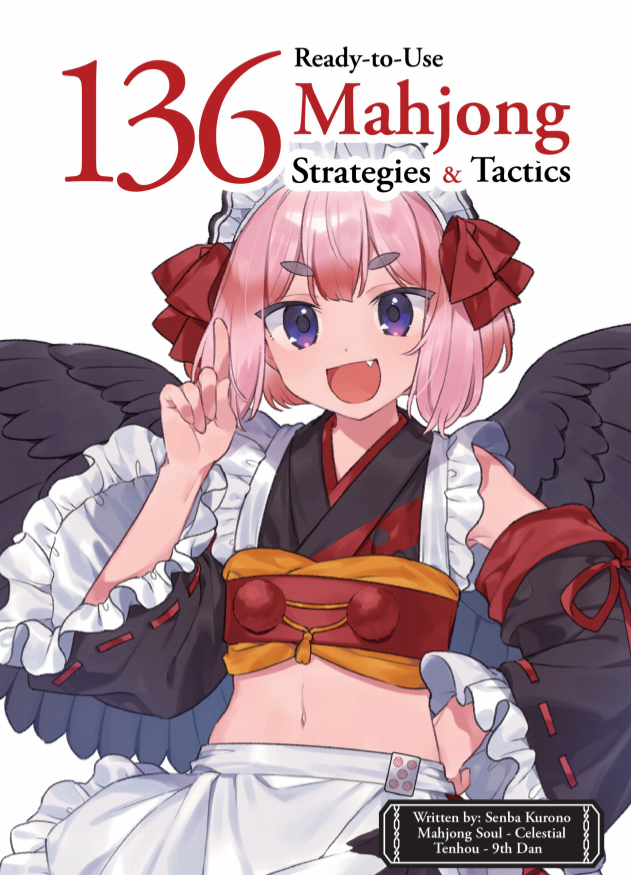Rich Gamer, Poor Gamer, Gran Turismo 7


Gran Turismo 7 is a beautiful video game and I legitimately relish driving cars in it. I love its approach, its perspective, the sheer love it displays for its all-consuming obsession with autosport. Also, every time I play GT7, it asks me at least once if I am very rich— like, “How much could a banana possibly cost?” rich— and if I would like to hand over some of that real dollar money today.
The other day I clicked the news page and there was an ad for a high-end steering wheel that looked really nice. Wow, I said to myself. That’s gotta be in the $600 range. I was close: $700. I’m pretty sure it was just an actual high-end steering column. That’s the audience this game now aims at: the same game I considered the ultimate value-for-money when I was a kid, because I could drive hundreds of cars for 50 bucks.
By contrast, I actually waited two years to buy GT7 because the price of entry was so high. (On my to-buy list: Yumeiro Yuram, Tekken 8, FF16. I just don’t have the cash!) These days, if you don’t buy some kind of “special” or “deluxe” version of a game for 20 or 30 bucks over the basic price, you get punished for it somehow. That was no exception here, so I waited for the $100 “digital deluxe” version to get around $60.
The F2P economy
I was right to do this, because it immediately becomes clear what the difference between the “deluxe” and regular versions truly is. In the deluxe version, you start off with 1.5 million credits for buying and upgrading cars. In the regular version? Zero. The deluxe version also gives you a car powerful enough to win some easy early races for you, and some other stuff small enough that I legitimately don’t think I ever saw it.
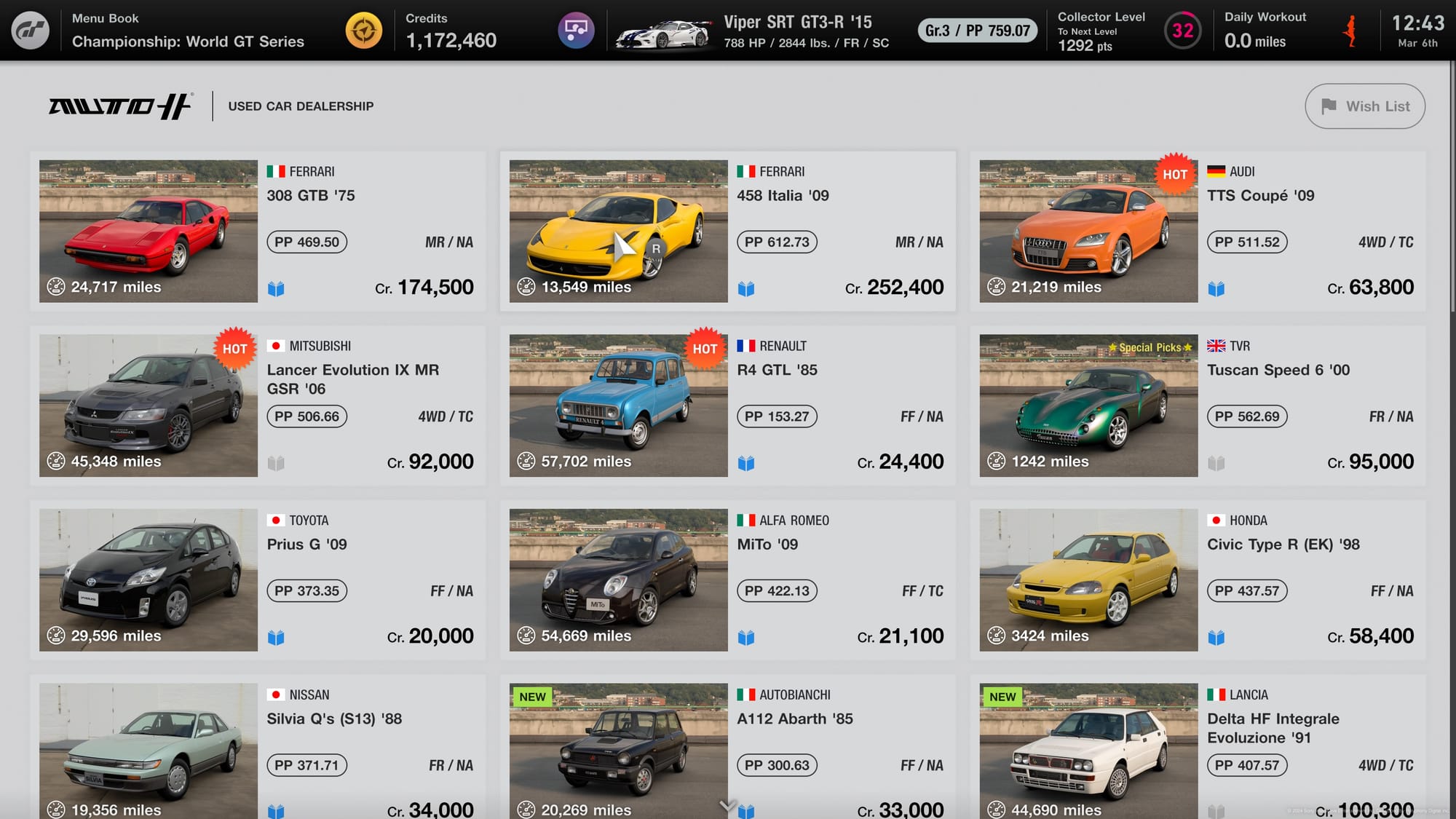
But really, the money is the difference, because like Gran Turismo Sport before it, GT7 has the same economy as a mobile game. You can’t look at console or PC games to ask where GT7’s in-game economy comes from: it has nothing to do with them. You need to look at mobile games like Asphalt and CSR, where everything— from buying cars to their upgrades and customization— is tied to real-world money. GT7 is significantly less greedy than its mobile rivals, but the fact remains that it’s designed to put up walls if you don’t have access to a wallet full of credits.
Rich man store, poor man store

As soon as you start, you see that there’s a poor player’s store and a rich player’s store. You start at the used car shop, which remains a selection of perfectly good cars at prices that are pretty easy to win from actually winning races. The game encourages you to raid the used car shop for cheap, good cars, and I love my Cappucino, my Fit, and the entire cast of Initial D very much.

But then there’s the rich store. It’s called “Brand Central”, and it’s for the competitive cars. You’re not taking that Cappucino online, after all. Even the interfaces are different: at the used car shop you’re buying off a single photo and some stats. In Brand Central you’re getting loving fly-by footage of the cars from the inside to the outside, beautifully “shot” scenes of the car driving through picturesque locations. Here, high-end cars cost more like 200,000 in credits, plus the hundreds of thousands more you’ll need to tune them to win the races you’re buying them for. Legitimate supercars— F1 machines, concept cars that don’t exist in real life— get into the multi-millions: more than the game came with, and often more than you’ll be able to actually grind out for a very long time. Two million credits is twenty bucks.
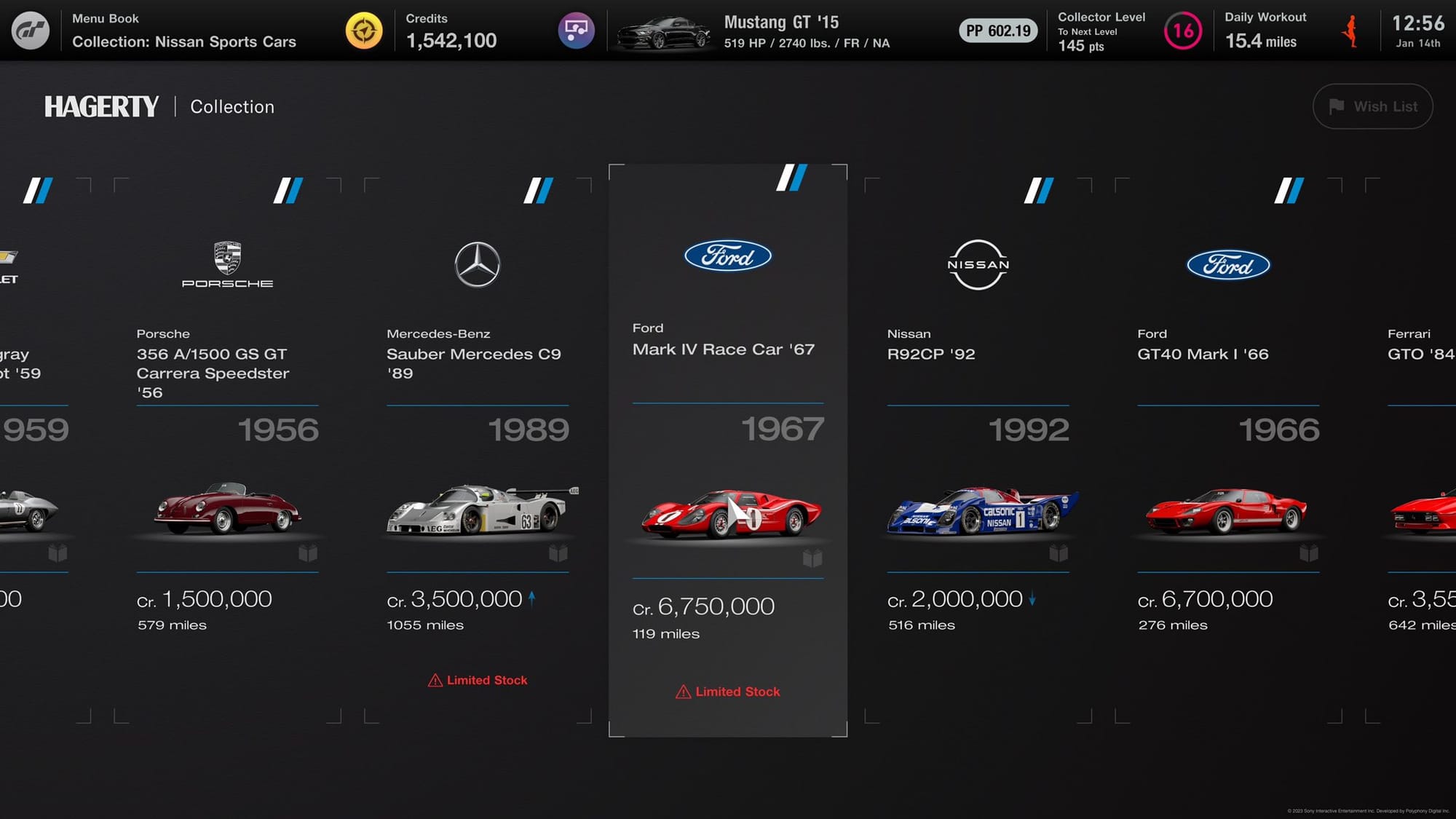
I’m not even done here. There’s a third “even richer player” store called Legend Cars. Here you walk into a tiny warehouse in the middle of the night and gaze upon classic vehicles that go into really insane prices; like six million. You’re not grinding out the money for one of these. Pay up.
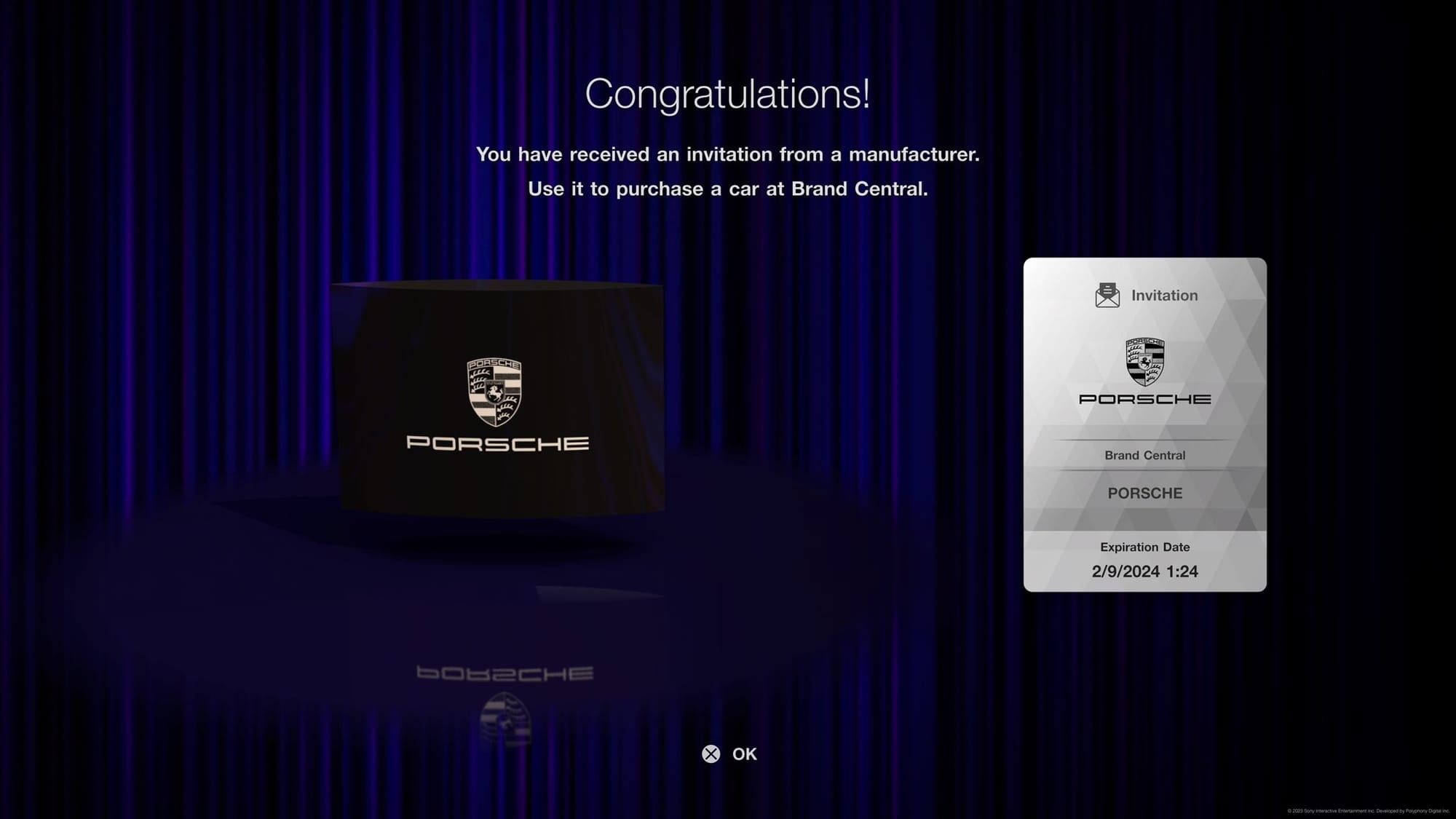
And this game’s got one last absolutely extortionate trick up its sleeve. You can randomly receive an invitation from a brand for a time-limited chance to buy an exclusive car from a high-end maker like Porsche or Lamborghini. It, again, costs more money than you can spend, and the invitation remains extended for a month or so. Ignore it, and the game will let you know what a shame it was that you missed out on such a wonderful opportunity.
Insufficient wages
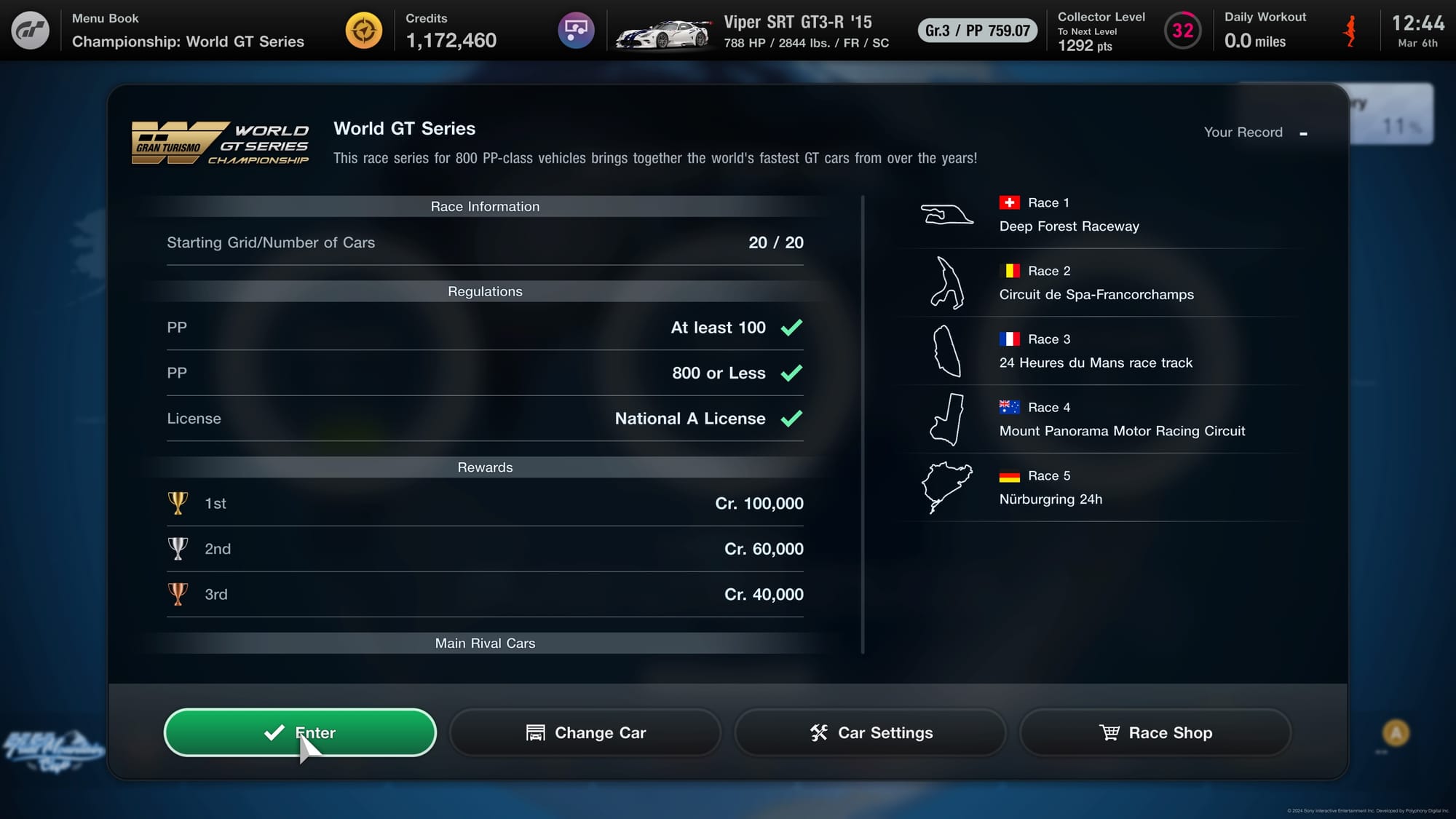
You can win money from races in GT7, but it’s not a sustainable amount compared to in-game costs: Pictured here, the final race series (I think; they're playing the song from Chariots of Fire) is about one hour and 15 minutes long, and it offers just 500,000 if you win the whole thing. The poor player will own one multi-million-credit race car that they won on the daily free gacha roll: the rich player will simply buy them up with real money.
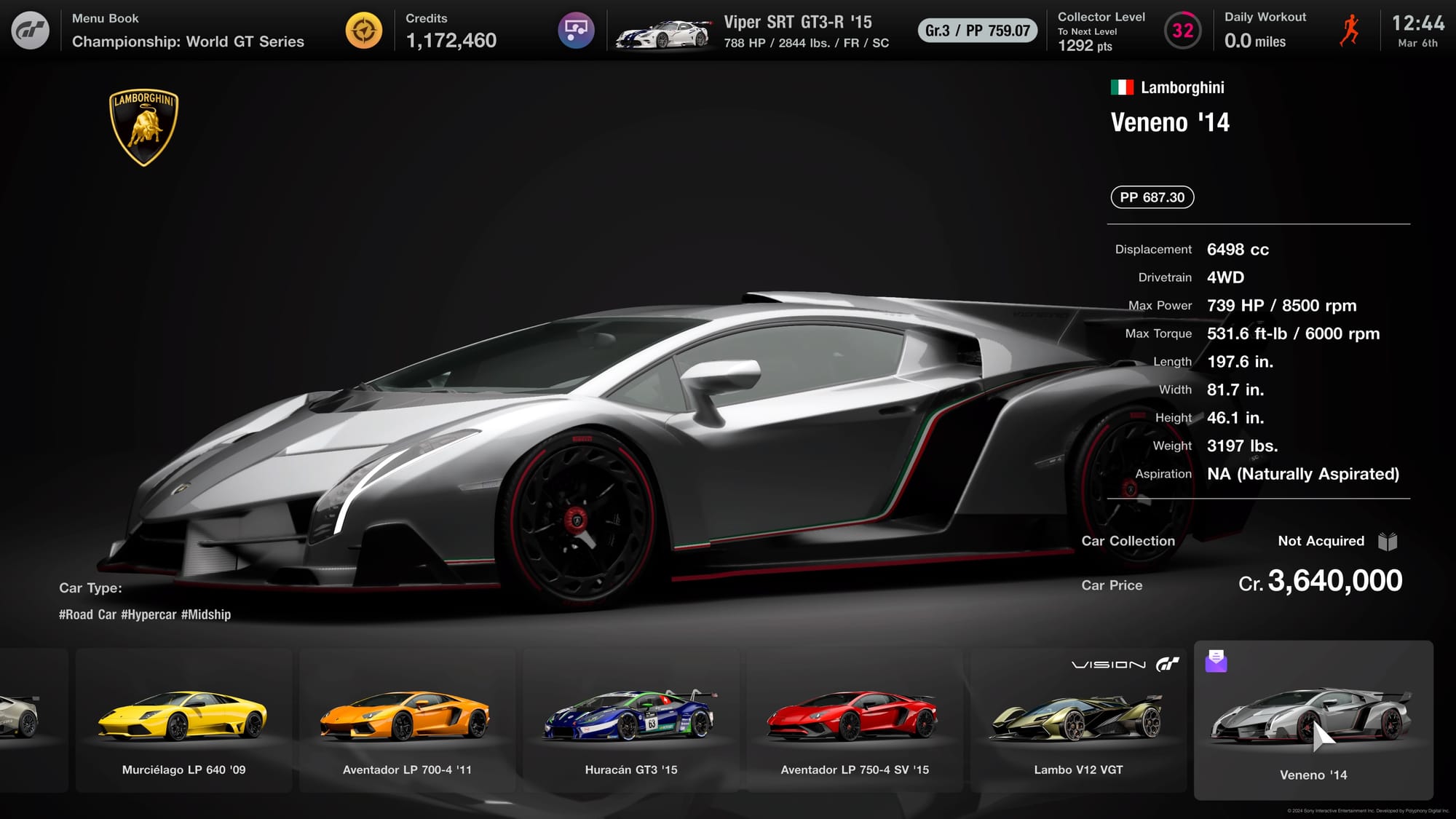
The implicit message is pretty obvious: if you want the slickest, newest, fastest cars— particularly if you want to compete— it’s time to go to the in-game shop and put up the money to buy the millions of credits that it costs.
With 400-ish cars, many of which are time-limited exclusives, it’s difficult to say how much it would cost to simply buy up everything. But it’s fair to say that figure is well out of the realm of console/PC gaming DLC— a couple hundred bucks or so— and probably in the thousands: the realm of the mobile game player.
(The people in that Road And Track article would consider buying out GT7 a drop in the bucket.)
But to get it through sheer hard work would take thousands of hours, with most of that time spent miserably grinding away the same max-credit-efficiency race series. The thing I hate the most about these “rich player, poor player” experiences is that the rich player gets to have fun playing the video game, and the poor player is forced to sacrifice fun and turn the game into work.
I have heard of players, by way of their PCs, the cloud, and some clever scripting, rigging GT7 to play itself to grind money. At the moment you're making a game play itself so that you don't have to do it, fun has died.
That sad state of affairs is exactly how mobile games turn out. (If a game has a "skip ticket", consider the idea that it's purposely designed not to be fun to play.) I used to shudder at the idea this kind of thing becoming normal, but that time has past. It just is normal now.
AAAA games
I admit I’m behind the times— I’ve been largely ignoring the AAA field in favor of niche genres for at least a decade now, I'm playing this game a couple of years late— but when I play GT7 I feel like I’m playing a luxury video game. The game does a lot that it doesn’t need to, often things that clearly took great effort, because it obviously just loves cars very, very much. There’s a small car encyclopedia packed into this game, and one location that exists solely for you to see the talking heads of actual real-life automotive engineers gush about their favorites.
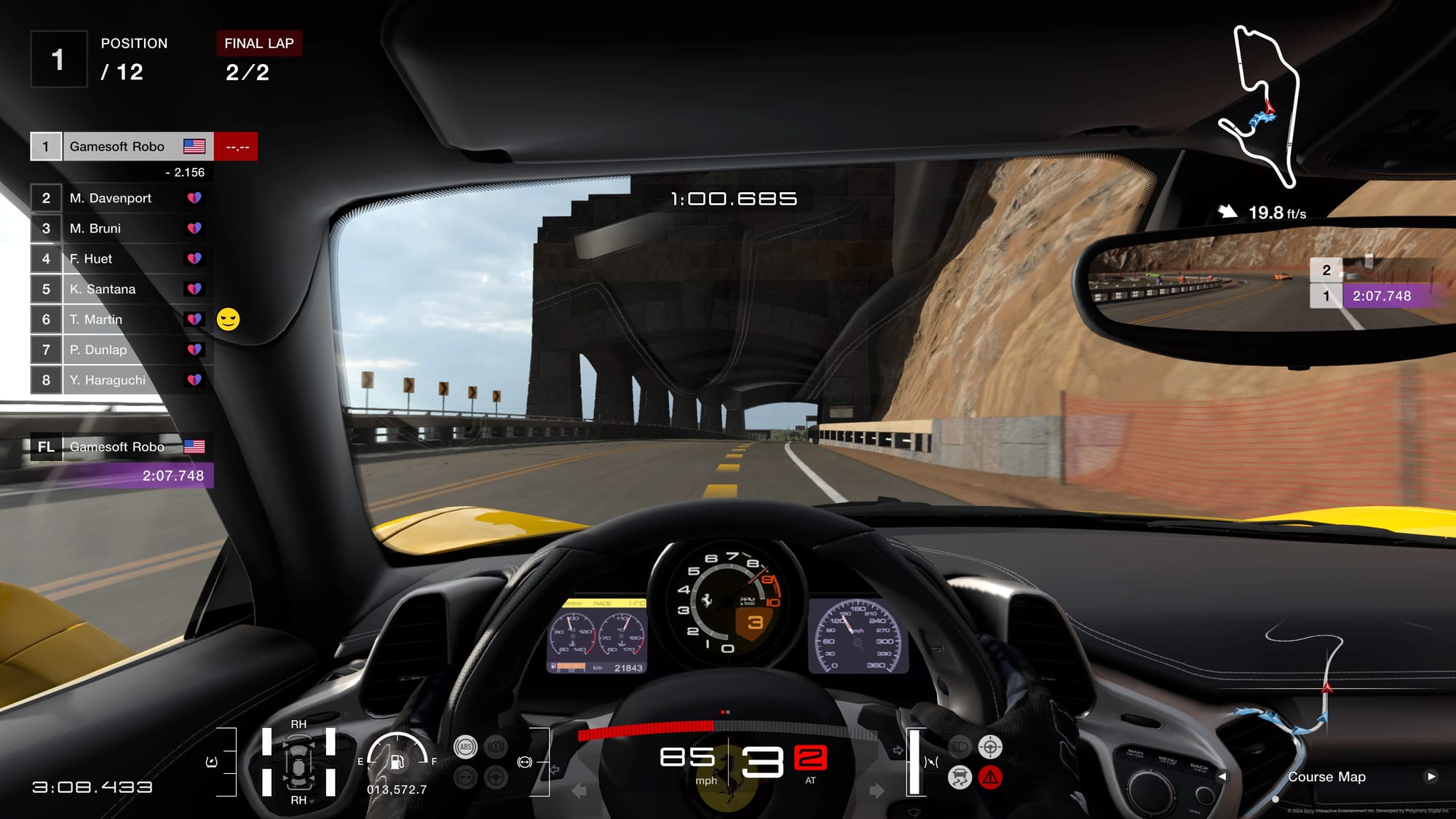
But the thing that sticks out most to me is the way the interior of every single car is fully modeled, even though this has no impact whatsoever on game play. You can even look around with the right analog stick. The cockpit view puts you in the actual seat of the car: for many of them, that makes the road unreadable. It’s not about that, though. It’s about sheer verisimilitude. Why animate the babbling brook on the side of this race course? Why have me stare at it for ten seconds in a pre-race cutscene? Because it’s beautiful. That’s it. Smell the roses.
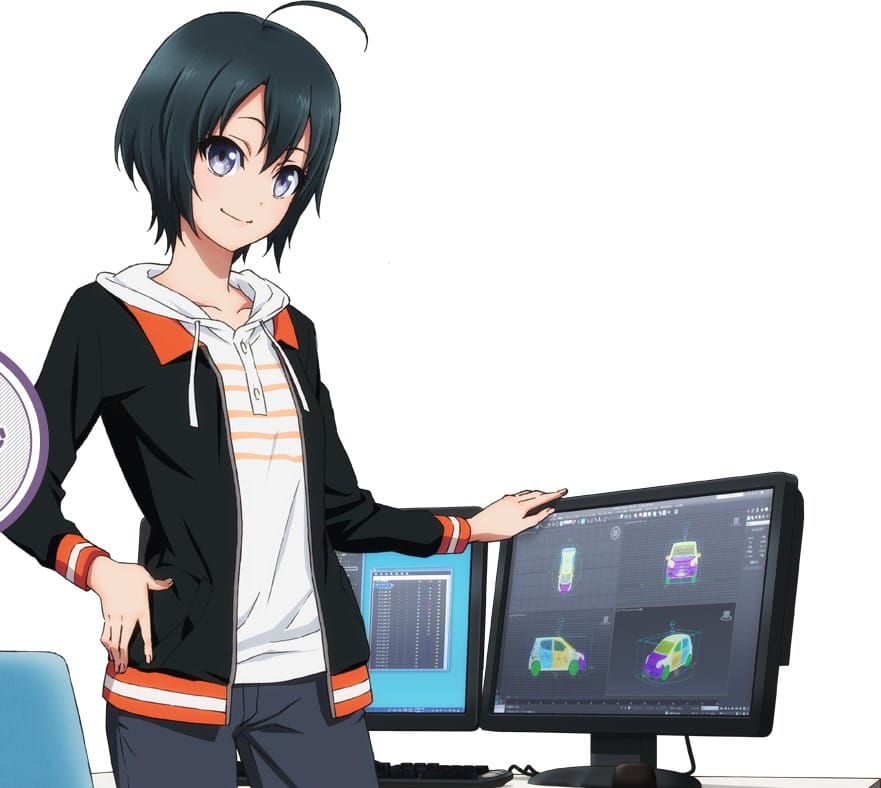
And I inevitably ask myself what I suppose is the dark question of the modern AAA world: “Is this really a 60-dollar video game?” Because it had to be outrageously expensive. It had to call for armies of workers beyond what I can imagine. When I play these games I think of Misa from the anime Shirobako who gets work in 3D modeling and winds up making replicas of tires for a game like Gran Turismo: all day, for the rest of her life.
Does a game like that make its budget back on sixty bucks? Probably not, right? And does the megacorp that paid for this game want to maximize profit on investment? Obviously. All that loops us back around to all the nickel-and-diming practices I just described.
The state of things
Free-to-play started off in mobile and social-network games, as an exercise in maximizing profits off a smaller game to an audience that wouldn’t pay for a game up front, but could be cajoled into paying much higher prices— and regularly— once they got hooked.
Today there’s fierce competition for that sucker money. Fortnite contains a universe within itself, and charges you for clothes. Mihoyo offers full RPG experiences for free, with mercilessly monetized systems paying the bills in the back. A monetized “small game” is starting not to be enough in this world: the bulletproof Love Live franchise just had a game fail within a year of its release, because the developer tried to cynically release the same game it offered ten years ago.
Traditional console/PC gamers fear mobile and F2p monetization practices leaking into their games, and imagine that they can somehow keep them safe in the traditional structure.
I don’t think players have that option. I think this stuff is here now, you probably play a game like it, it’s coming for Your Favorite Game, and the old ways are never coming back. But enough about the Street Fighter 6 battle pass.
To hell with “Poor player” and “rich player” experiences
And I hate this state of affairs for the future, or maybe the present. I hate that little kids I pass on the street are talking to each other about how desperate for V-Bucks they are. Video games were supposed to get them away from that shit.
I'll keep playing Gran Turismo. I love it. I vibe with it. I even understand why you'd need a lot more money than sixty bucks per player to run a live game of its scale.
But I wish there was a better way.



